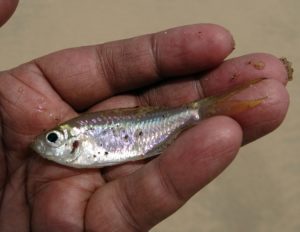The thrill of using artificial lures can be exhilarating, but sometimes you just want to kick back and relax. Even with all the new flashy lures out there, it can’t beat the real thing when it comes to attracting fish, especially if you’re one to go without too much effort.
Go figure though, fish living in bodies of freshwater have different tastes from those living in saltwater. It’s not like most freshwater fish have access to crab, so in comparison, freshwater fish bait isn’t too hard to come by.
Still, unless you’re gunning for a specific type of fish (in which case you probably want to try your hand on using lures instead), most types of bait listed in this article should be good enough for your fishing needs.
Worms
A classic and a favorite. Worms are practically a staple for any fishing rod, and for a good reason: they work really well. Many bait shops sell them, and they are one of the most commonly used live baits by anglers. Heck, you can even dig some up from your own backyard for free bait. It’s where you can find most earthworm species.
There are different types of worms that anglers use for different purposes. Red worms, for instance, are a common choice due to being able to survive underwater for around 45 minutes without surfacing, while also having a distinctive scent. Night crawlers, on the other hand, are used by anglers if they wish to fish in muddy waters, or if they’re aiming for a bigger catch.
However, if you don’t really care for the intricacies nor the type of fish you catch, then any old worm will do. Pretty much all freshwater fish will go for a bite.
Minnows
There are many species of minnows, but they all share a common trait: Being small. Basically, minnows are small fish but quite versatile. Though, you may want to upgrade their size if you’re going for a bigger catch like bass or pike.
You can get any number of minnows easily from any nearby bait shop, though it is also possible to catch your own if you wish (make sure it’s legal to catch and use first).
Minnows work best while alive, so when trying to hook it, make sure you do not accidentally damage its spinal cord or kill it. A good strategy is to hook your minnow upside down on a jig. The fish will struggle in the water to regain an upright position, causing water vibrations and attracting predatorial fish.
Leeches
Leeches, despite crawling around like worms, are not worms. After all, worms don’t suck blood.
Yet, they both share similarities of being excellent freshwater bait for many types of fish. Though, unless you want to go trekking and get some leeches attached to you, you are better off buying them in bait shops.
Before fishing, place your leeches in a live well (if you have one) for at least an hour. This will help the leech get used to the water environment and help them stretch out and swim more naturally. When fishing with leeches, ensure that you do not fish too fast, as you their main attractor is their movement on the water.
Ensure that you do not fish in too cold temperatures either, otherwise the leeches may simply curl up into a ball.
Insects
Frogs aren’t the only ones that like insect-y snacks. Fish find themselves attracted to insects too. Crickets, caterpillars, grubs, grasshoppers, beetles, and even tiny skittering ants are all on the menu for a hungry fish. Some species of fish that enjoy insects are trout and sunfish.
Luckily for you, many of these creepy crawlies can all be found in your backyard. You can finally use that anthill in your backyard!
They are best used during spring, as insects during this season are particularly abundant.
Crayfish
A seemingly unusual, yet useful type of bait. Crayfish are like tinier versions of lobsters and are quite unique in that different parts of their body are used to attract different types of fish. For instance, a live crayfish is used (hooked by its tail) for catching smallmouth bass. A dead, threaded one attracts catfish and bullheads. Meanwhile, pan fish are attracted to the claw or tail meat of the crayfish.
Crayfish are not as common as other types of bait in this list and are most commonly bought in bait shops. If you want to save cash though, you can try catching your own. Search nearby lakes at night and use a mesh net to capture them.
Finishing Up
Using bait is more economically friendly, as long as you don’t mind having to hold some wriggling things on your hands. However, always remember that some areas have regulations on which types of bait are allowed. For instance, minnows are banned in many lakes due to their environmental impact: They can easily turn into an invasive species, take over a lake and starve out the other game fish.
If you want a relaxing outing, make sure that you are prepared with the right bait for the right place for the right fish. It’s better to have an overflowing amount of bait when it all ends than to run out when the fish are most active.

